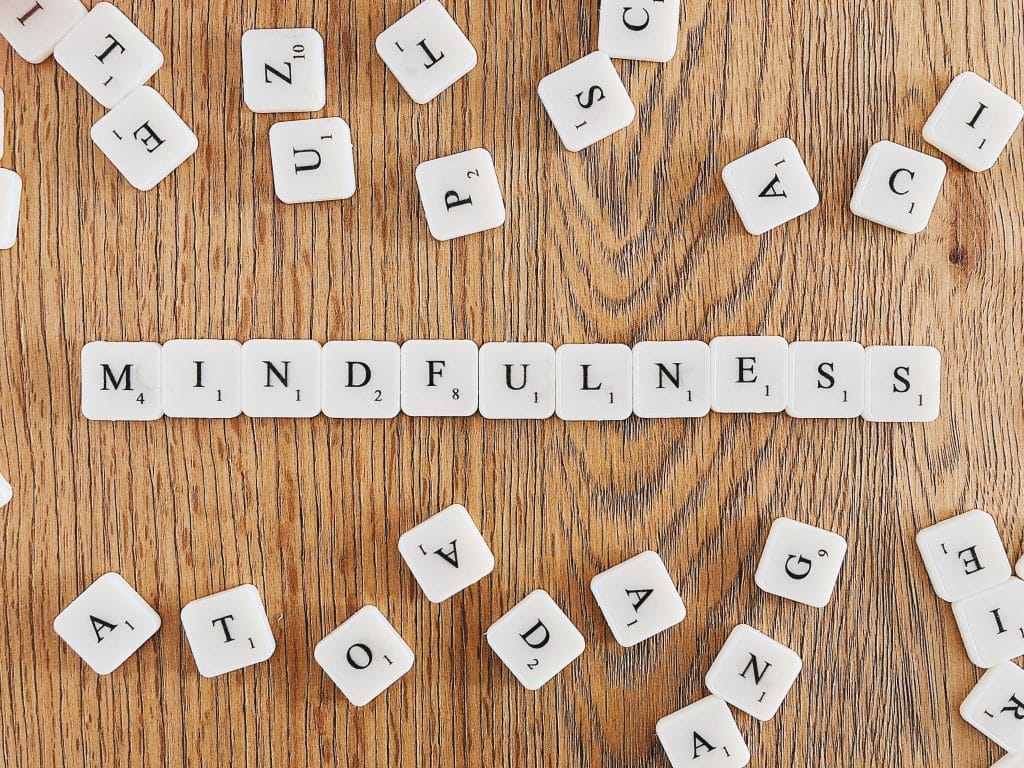For many people trying to be more mindful is one of the first things on their list of new year’s resolutions. Mindfulness is a practice that can help you appreciate life in the present moment rather than worrying about the past or future. It can also help you become more aware of your thoughts, feelings, and emotions so you can respond to them in helpful ways. If that sounds like something you could use in your life, here are some tips to help you become more mindful in the new year.
Contents
Mindfulness Vs. Meditation

Mindfulness and meditation often get mixed up and confused with one another, but the truth is that they are two distinct practices. Mindfulness is a way of life; it involves conscious choices throughout your day and being attentive to thoughts, emotions, and bodily sensations as they pass through. Meditation is a practice used to access a calmer mental state. It may involve guided visualizations or silent contemplation.
Both practices can bring us greater peace of mind, but the main takeaway is that mindfulness is something you apply all the time, while meditation is an activity undertaken to gain inner clarity and balance. Combining mindfulness and meditation can lead to better focus, healthier relationships, improved emotional regulation, and overall well-being.
Tips To Be More Mindful
With an understanding of how mindfulness works, you can now look at some easy tips to help you become more mindful in the new year. By making small, incremental changes to your lifestyle, you can gradually shift your mind towards greater awareness and balance.
Start A Journal

Mindfulness is an essential practice for physical, mental, and emotional well-being. Keeping a journal can be an effective way to cultivate mindfulness both on and off the page. A journal can be both a safe space for self-expression and a beneficial outlet for relieving emotions like anger or anxiety. By encouraging reflection and introspection, writing helps rein in your thoughts, fears, regrets, and unnecessary stress.
Additionally, writing down your concerns gives you clarity of thought by allowing you to evaluate scenarios more composedly without the influence of heightened emotion. Noting moments of joy or gratitude also provides an opportunity to honor your successes or just recognize the little things that make life worth living.
Focus On One Task At A Time

Taking on too much at once can be overwhelming, but sometimes that’s unavoidable. Allowing yourself to “be in the moment” while performing any given task gives you a chance to slow down and heighten your awareness of what’s happening around you. Rather than trying to tackle multiple projects, tasks, or responsibilities simultaneously, it’s smart to focus all of your energy on the present task.
This kind of focused mindfulness increases your engagement with the task and makes you more productive, not just more aware and relaxed. Taking it step by step allows you to take in each task at its moment; this approach is beneficial for time management and effective multitasking!
Practice Active Breathing

Everyone knows the importance of relaxing, being still, and focusing on your breath. Unsurprisingly, active breathing can be a powerful practice for becoming more mindful. When you’re mindful of your breath, you can ground yourself in the present moment and cultivate an awareness of your thoughts and feelings with greater clarity.
Not only does this help you to better understand yourself, but it also strengthens your ability to respond calmly and skillfully to stressful situations. With regular practice, active breathing can become an invaluable tool for cultivating greater peace of mind and balance.
Make Eye Contact In Conversation

Making eye contact is a powerful way to practice mindful communication. It requires both parties to be present in the moment and focused on the conversation at hand. Focusing on someone’s eyes allows you to monitor their reactions to what you’re saying and observe signs of agreement or disagreement–without interrupting the conversation’s flow.
Making this direct connection is not always easy, especially if the other person feels intimidated or uncomfortable with your gaze; however, it can deeply improve overall communication when successfully used. Taking the time to practice eye contact during conversations can increase understanding between two people and help build trust that encourages more creative thinking, thoughtful problem-solving, and meaningful relationships.
Work On Your Mind-Body Connection

Working on connecting your mind and body is another crucial part of being mindful. It helps you to become more aware of the present moment, thus reducing stress and improving your physical and mental well-being. While there are many different techniques available to assist in developing the connection between the mind and body, yoga is one of the most effective.
Yoga involves both physical postures and breathing exercises that lead to relaxation. In addition to helping with mindfulness, it also helps to increase flexibility, strength, and balance. Taking the time to practice yoga regularly can help to promote inner stillness, hone your concentration and bring clarity to thought as you learn how to observe your body’s sensations more closely and connect more fully with your side of self-care.
Perform A Digital Detox

Taking time away from your digital devices to perform a digital detox can greatly help make you more mindful. Without your phone and other screens constantly demanding your attention, you can instead focus on the present moment and appreciate life’s small pleasures. It is a fantastic way to form healthier habits by reducing online time and shifting our attention to activities that don’t involve technology.
A mindful break can result in improved mental, physical, and emotional well-being, which are necessary for living your fullest life. Taking action to perform a digital detox will refresh your mind and remind you to be more aware of the things that matter most.
Allow Yourself To Feel Emotions

Allowing yourself to feel emotions is a valuable skill worth practicing. When you allow yourself to experience and express your emotions, you become more aware of the subtle nuances of your own inner life and your relationship with the outer world. Tuning into your feelings allows you to develop a deeper understanding of yourself and others, creating a greater sense of connection and empathy.
As mindfulness practices can sharpen your self-awareness, feeling your emotions helps you learn about what’s happening within you and gives you greater insight into how you interact with the world around you. Allowing yourself time for emotional consideration supports well-being by fostering self-care and allowing for a healthier balance between thoughts, feelings, and actions.
Take Some Time To Be More Mindful!
Taking steps to be more mindful can be a great way to improve the quality of your life. As you become more aware of yourself and your environment, these patterns will naturally take hold in your everyday actions–for the better. By practicing these techniques, you can experience greater physical and mental well-being and stronger relationships with those around you. Mindfulness is a key to living life with intention, requiring practice and dedication. So take some time to work on it today!


